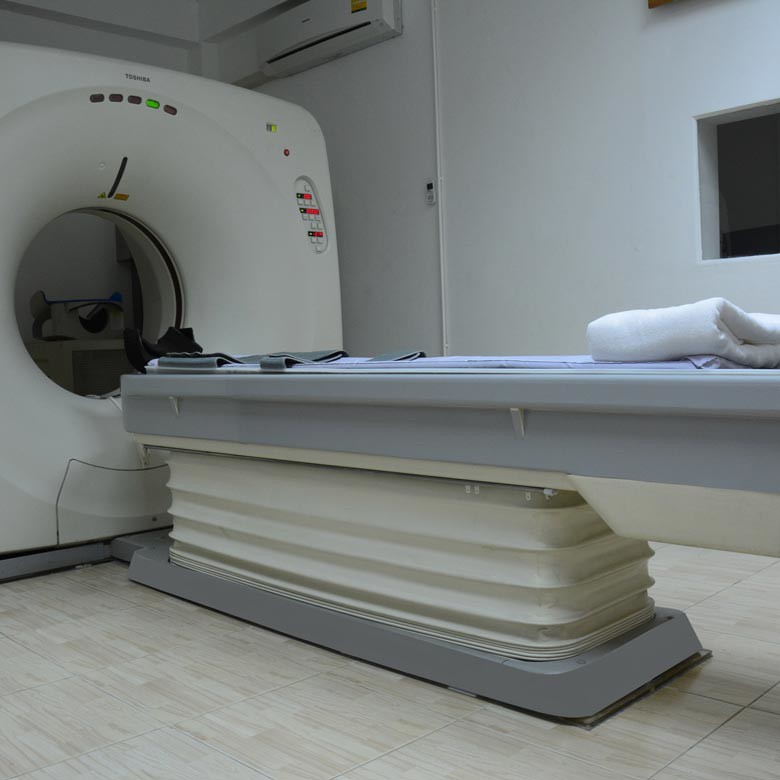CT Scans
Computerised Tomography (CT) scans are used to provide information to doctors to help them diagnose medical conditions.
CT scan results can confirm or disprove a suspected diagnosis. Occasionally they can help identify a condition that was not suspected. Unlike other medical imaging technologies such as X-rays, CT scans can give detailed images of many different types of tissue, including bone, blood vessels, lung tissue and other soft tissues.
Types of CT scan include:
Abdominal – these can be used to identify tumours and diagnose conditions that cause internal organs to become inflamed or enlarged, e.g. suspected appendicitis can be confirmed or ruled out.
Head – these can be used to check for inter-cranial bleeding following head trauma, the brain after a stroke or to look for suspected tumours and bleeding or swelling of the arteries.
Vascular scans – these can be used to assess conditions that affect blood flow to various parts of the body, one of the most common reasons for using this here is to confirm or rule out DVT
Bone scans – these can be used to assess bone disease and injuries, particularly in the spine
CT scans are often used after very serious accidents to look for any internal injury; they’re sometimes also used to prepare for further testing and treatment. For example, because a CT scan can identify both abnormal and normal tissue, it can be useful when planning radiotherapy treatments.
What to expect during a CT scan
While the CT is a safe procedure and the radiation doses are very low, it should not be used as a regular check-up tool but rather on the advice of your physician for specific problems. While the CT scan itself usually takes no longer than 5 minutes, with preparations included, it can take around 30-40 minutes. According to which part of your body needs the scan, you may be asked to put on a hospital gown in a private area. You will also be asked to remove any glasses, contact lenses, jewellery, dentures and hearing aids.
Next, you will be asked to lie down on the scanner table. This slides in or out of the scanner ring. Your radiographer will position the table so that the part of your body needing the scan is in the middle of the scanner. You may be asked to momentarily hold your breath or not to swallow at certain times during the scan. You can trust the radiographer to do the rest of the work for you the most important thing is for you to lie still so that the image is captured effectively. You will probably notice some whirring noises while you’re inside as the scanner does its job.
The scanner will be operated from a control room by your radiographer. He or she will be able to see, hear and speak to you at all times during the procedure. Once the scan is complete, the scanner table will move back out and you will be helped down. You will usually be able to go home as soon as you feel ready.
The results will soon be reviewed by our radiologists and the findings given to you/your doctor usually on the same day.


